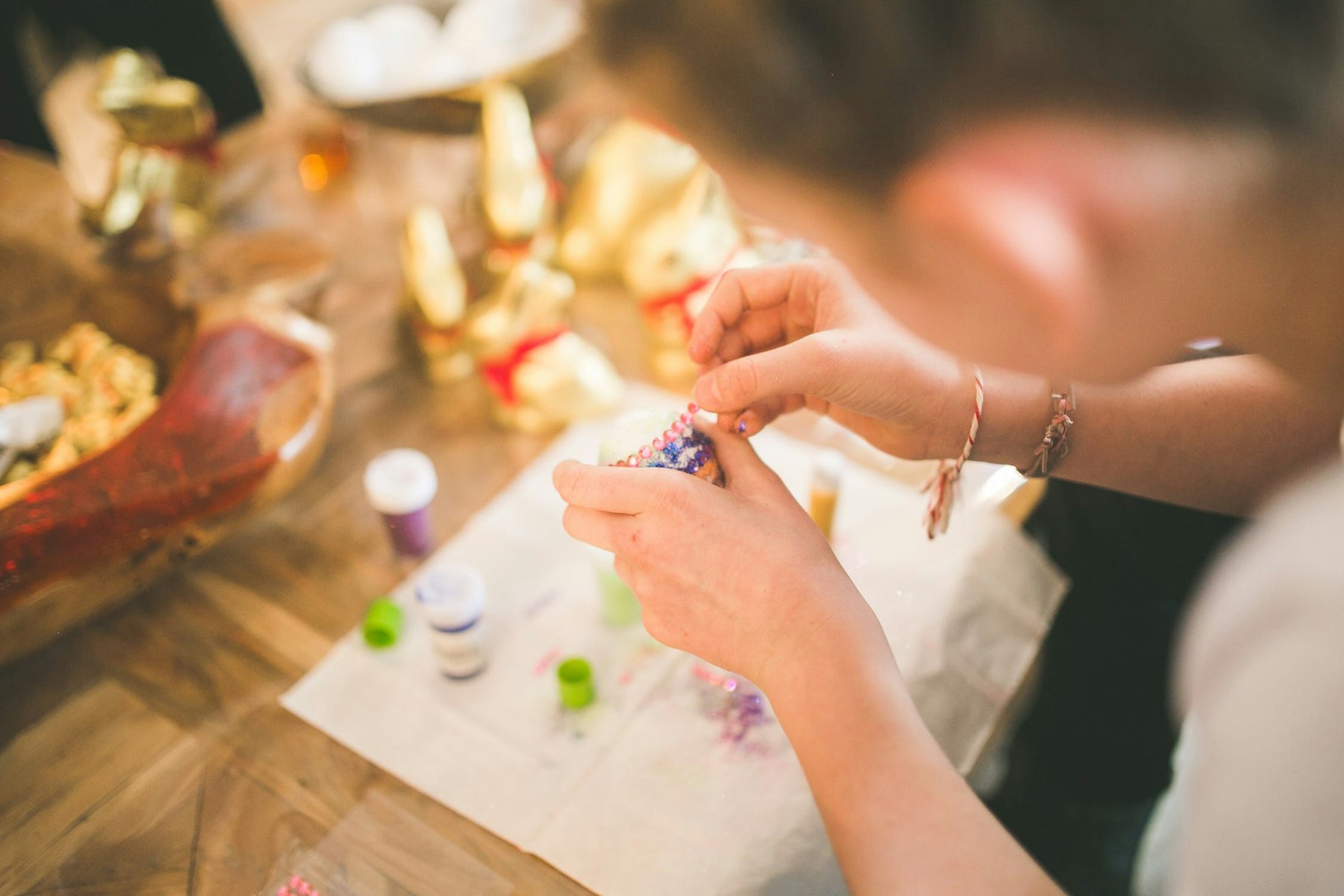Feeling crafty? It’s time to learn how to start a craft business.
The world is full of artistic people who stitch, paint and print their way through life. Crafting is an excellent way to relax, unwind, and allow your creative side to shine through.
What if we told you that crafting could be more than just a hobby?
According to Statista, the crafts market worldwide should reach a value of around $50.9 billion by 2024. With the online world now making it easier than ever to launch a craft store, there’s nothing stopping you from taking your crafting skills to the next level.
Building an online craft business allows you to leverage your passion and turn it into something that makes money. Later, you can decide whether you want to work on it full-time or treat it as a side hustle that makes you extra income.
So, how do you begin? Here’s a 9-step checklist to help you set up your own craft business.
What Do I Need to Start a Craft Business?
1. Identify a Gap in The Market
The first step in starting a crafts business is deciding what you’re going to sell. Your decision of what to “craft” will partially depend on what you love making. However, it’s also important to research the market and see what could sell for your company.
Examine your industry and ask yourself what kind of products you could offer through your brand to make customers more likely to buy from you. For instance, you might be great at making your own soap, but there are tons of other creators like you out there. How are you going to stand out? Maybe you could promise soap that’s completely organic and made with special ingredients?
→ Click Here to Launch Your Online Business with Shopify
Stock up on secondary market research from groups like MarketResearch.com, Nielsen, and NPD to get an idea of what’s trending. Some options might include:
- Custom art: People love commissioning pieces specially tailored to their needs. You could sell portraits of your customers or their pets or design art based on the unique things your clients love, like a certain book or video game.
- Gift baskets: Many people struggle to find the perfect present for someone they care about. Why not remove the stress for your audience by giving them pre-made gift baskets specially designed for a certain occasion?
- Skincare and beauty: This is a big industry on its own. You can combine your love of beauty with your passion for creation by selling perfumes, soaps, bath bombs, and other popular indulgence items.
- Jewelry: Make your own double pearl earrings. Or try your hand at a DIY necklace idea. Jewelry is always a no-brainer when it comes to easy crafts that sell. If you find that people love your designs, maybe you could start a jewelry business to turn your passion into profit.
For extra inspiration, use Google Trends to find out what people are talking about in your industry. Alternatively, try asking your friends what they would love to buy.

A lot of people are searching for a hat box these days, so this can be something you could offer through your craft store.
2. Get to Know Your Audience Better
For those learning how to start a craft business, there’s good news: the crafts industry is a pretty diverse place. Selling in this industry means you can target various demographics and consumer segments based on the products you sell.
If you’re selling home essentials like key hooks and blanket covers, you may focus on older consumers who can afford to buy items for their homes. If you’re selling handmade friendship bracelets and bath bombs, you can probably target a slightly younger audience.
To identify your target audience, consider which people are most likely to fall in love with your products. If you’re starting a small craft business selling baby blankets, your primary customer may be new parents. However, you could also appeal to relatives who want to buy baby shower gifts.
When researching your audience, think about their:
- Primary goals for buying your product
- Pressing pain points
- Likes and dislikes
- Age, gender, and location
- Behavior (where they browse online)
You can find extra data about customers on things like the U.S. Census Bureau website, Nielsen, and even by checking the Facebook Audience Insights tools for better social media targeting.
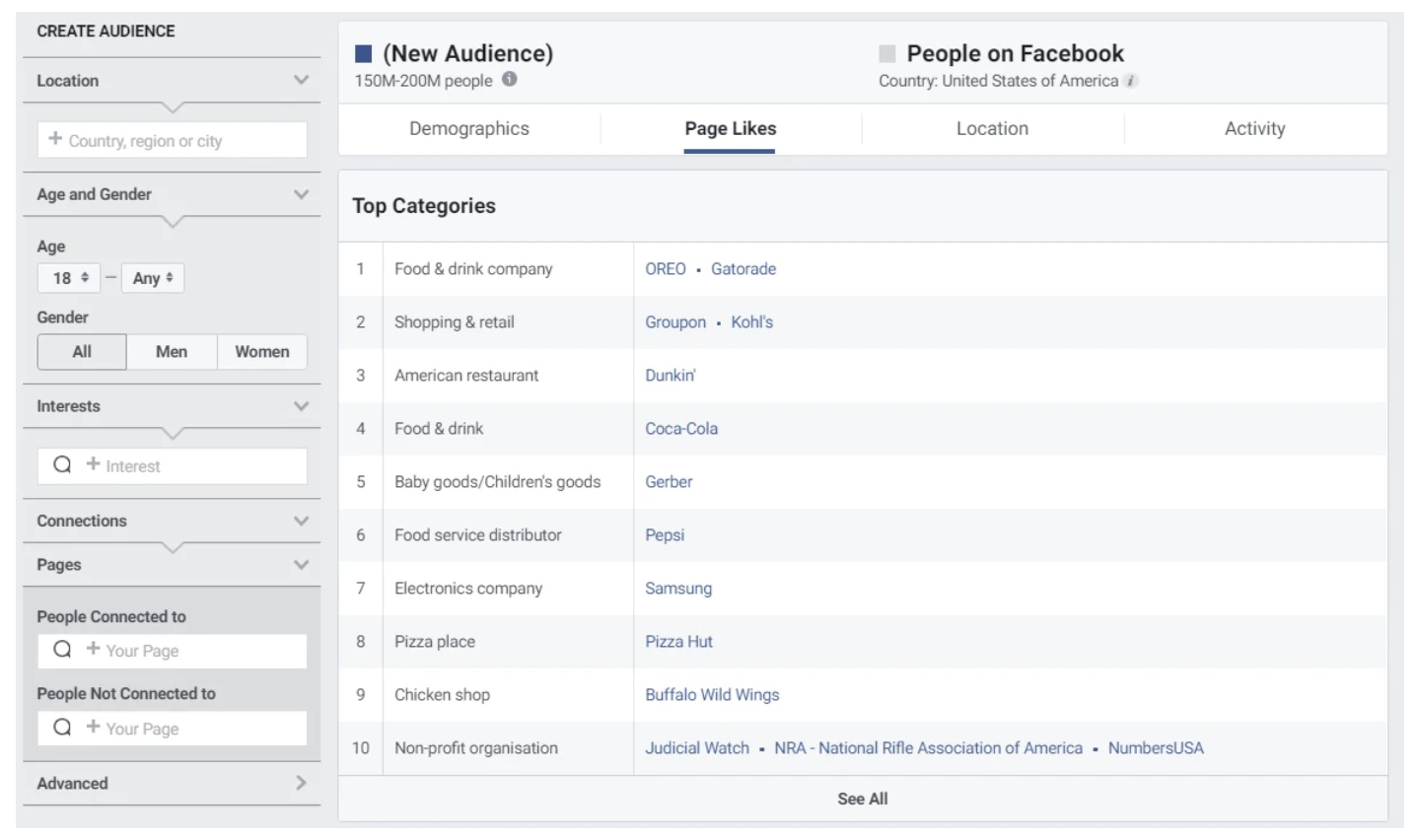
3. Create a Business Plan
When you’re learning how to start selling crafts online, you’re likely to get carried away with things like planning which products you’re going to sell and finding your target audience. Pump the breaks for a second, though – it’s important to do some planning first.
Creating a craft business plan is a must-have. Think of it as the compass for your business, keeping you moving in the right direction, no matter what happens in your industry.
Business plans remind you of your mission and vision statement. These documents are also extra useful when you’re trying to get business funding from a bank or investor. Here are some of the points your plan should include:
- An executive summary
- A description of what your craft business does
- Competitive and market analysis
- SWOT analysis
- Marketing and sales plan
- Company management team
- Financial projections
If you’re still feeling uncertain about business plans when learning how to start a craft business, you can find some handy video tutorials online that can help you to write your business plan. Or just use a business plan template to get going. You can modify the information there to reflect the nature and vision of your business.
4. Get Crafting
Now it’s time to have some fun!
In this step, you’re going to develop a plan for how you’re going to make your crafts. There are plenty of ways to jump into this process. For instance, you could explore some lessons or webinars online to teach you how to hone skills you already have. For instance, if you love making jewelry, you could learn how to make chains or design your own earrings. Try:
- Online workshops: There are various sites out there, like CreativeBug, where you can learn about knitting, crochet, sewing, quilting, and so much more. You may even find videos on YouTube and Facebook to help you.
- Experimenting with ideas: Make a list of the crafting you enjoy most and start there. You might like the idea of making your own soap, in which case it might be worth looking into the kind of ingredients you can buy online. If you’re thinking of starting a pottery business, invest in the tools you need to make amazing ceramics.
- Create the right space at home: If you’re learning how to start a craft business at home, then you’ll need to ensure that you’re properly prepared. Set up space where you can work on things like furniture upcycling or knitting blankets for your customers. Make sure that you have all the tools you need and plenty of storage space.
5. Find a Manufacturer or Supplier
It’s difficult to scale a business when you’re the only person working on crafting your creations. As your business grows, there’s a good chance you’ll need some help to achieve a work-life balance. Finding a manufacturer who can make your designs for you could make it easier for you to manage your business.
You will probably also need to look for a supplier who can give you the raw materials you need to make your items. This could include paying for special types of wool or threads for your embroidery company. Think about:
- The quality of the crafts: While crafts with a handmade essence to them can be very endearing, you don’t want your creations to seem cheap. Investing in the right supplies will ensure you have a great impact on your audience.
- Samples: If you’re thinking of working with a supplier long-term, get samples of the materials first to make sure they work for your business plan. Once you find supplies you like, consider drawing up contract terms that keep you fully stocked all year round.
- Location: It’s a good idea to find someone as close to you as possible to supply and manufacture your goods. An overseas manufacturer might seem like a good way to save money, but this could also leave you waiting for long to get the items you need. Working with a local vendor could lead to faster shipping and better product quality.
For beginners learning how to set up a craft business, it may be worth choosing a more affordable business model, like dropshipping. This allows you to set up a craft store and list products on your site. When someone buys an item from your online store, a third-party supplier manages the fulfillment process – from packaging it to delivering it to the customer’s doorstep. You don’t keep an inventory, so you save on warehousing costs… and time. Dropshipping is an ideal business model for aspiring craft entrepreneurs who want to focus on marketing their business rather than worrying about inventory management.
6. Develop Your Brand
Branding is one of the most important things you can do for a craft business. Because people buy from companies they know, like, and trust, you need to present them with a brand that leaves a great lasting impression. Good branding involves everything from a memorable company name to an attractive logo, a meaningful color palette, and even a unique tone of voice.
Creating a brand is easier than you’d think, thanks to some great online tools out there. For instance, Shopify offers a:
These tools make building a memorable business as simple as possible. For instance, you just have to add relevant keywords, like “ceramics” or “knitting,” in the slogan maker, and it will generate a bunch of great slogans for you to consider.
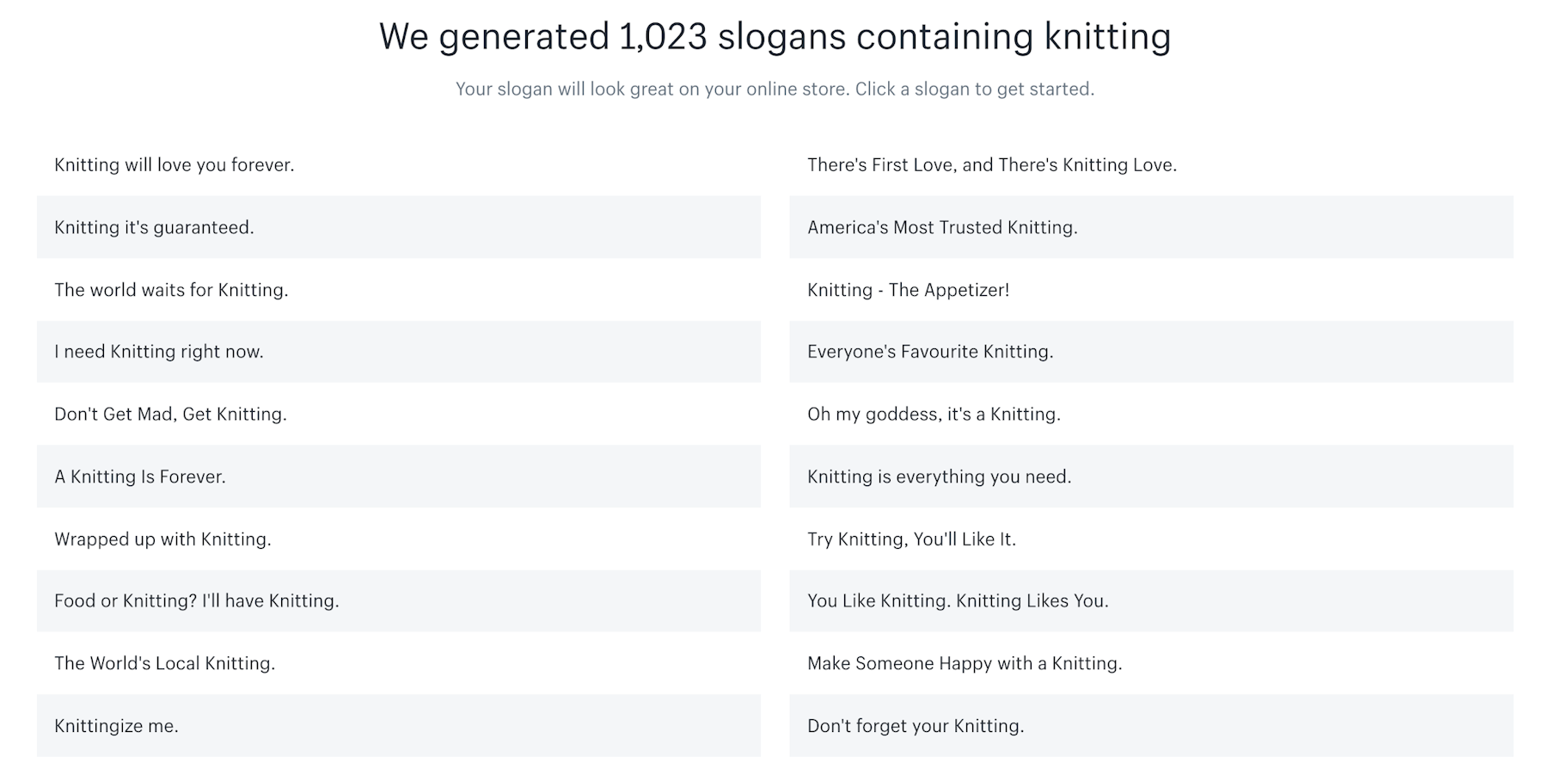
If you’re struggling to design everything on your own, you can also work with professionals from places like Fiverr, Upwork, and DesignCrowd.
7. Fulfill Your Legal and Logistics Requirements
Part of your checklist for starting a craft business should include ensuring that everything in your company is set up correctly from a legal and logistics perspective. Just because you’re running a simple company selling handmade scarves doesn’t mean you don’t have to register your business, for instance.
If you’re unsure how to set up a craft business legally, you can find plenty of information online or talk to a tax professional. Some points to consider include:
- Business registration, permits, and licenses
- SKUs for your product line
- Shipping costs and weight
- Shipping restrictions for your products
- Production overhead and costs
- Sales and business taxes
- Copyright, trademark, and patent requests
If you’re nervous that you might not have the paperwork you need, or you don’t know what certain documents mean, then you might need to talk to a professional just for peace of mind.
8. Build Your Online Craft Store
Like creating your beloved crafts, designing an online store is a lot of fun.
It’s your opportunity to combine various aspects, like your chosen brand colors, logo, and product pages, so that you have an entire storefront online. With an ecommerce platform like Shopify, creating a professional-looking website is a breeze – you could build an ecommerce site in under 30 minutes.
If you’re keen to take advantage of the time and money-saving benefits of dropshipping, you can also access DSers – which is the AliExpress import app for Shopify.
You can work with an expert or designer on your website for some extra help.
Some of the most important points to consider include:
- Inspiring and engaging product descriptions for your crafts
- Stunning pictures of your crafted items
- Landing pages that encourage people to build a relationship with your company
- Privacy policies, terms and conditions, return policy, and shipping policies
- Rates and zones for shipping
- Checkout pages and payment gateways.
The cool thing about Shopify is that you can adjust various elements, from your templates and themes to your resources and other tools, that can help you to make your store unique.
9. Start Marketing Your Crafts
One of the more challenging aspects of learning how to start a craft business involves figuring out how to attract customers to your store. Marketing is a crucial component of selling crafts. The amount you spend on promotion will depend heavily on your budget and the strategies you use.
For instance:
- Email marketing is an excellent way to develop relationships with your customers and encourage them to keep purchasing from your brand long-term. Make sure you segment your audience based on the crafts they like to keep messages relevant.
- Social media marketing is a great way to connect with your customers every day. You can show customers how you make your products through YouTube tutorials, snap pictures for Instagram, and design boards on Pinterest.
- Influencer marketing is a great way to give your new brand a boost reputation-wise. You can work with well-known professionals in your space to improve your chances of finding the right customers. Influencers exist on every platform, from TikTok to Clubhouse to Facebook and more.
Online Craft Store Examples
Still need ideas on how to start a craft business? Here are some examples of successful craft brands to inspire you.
1. Artisaire
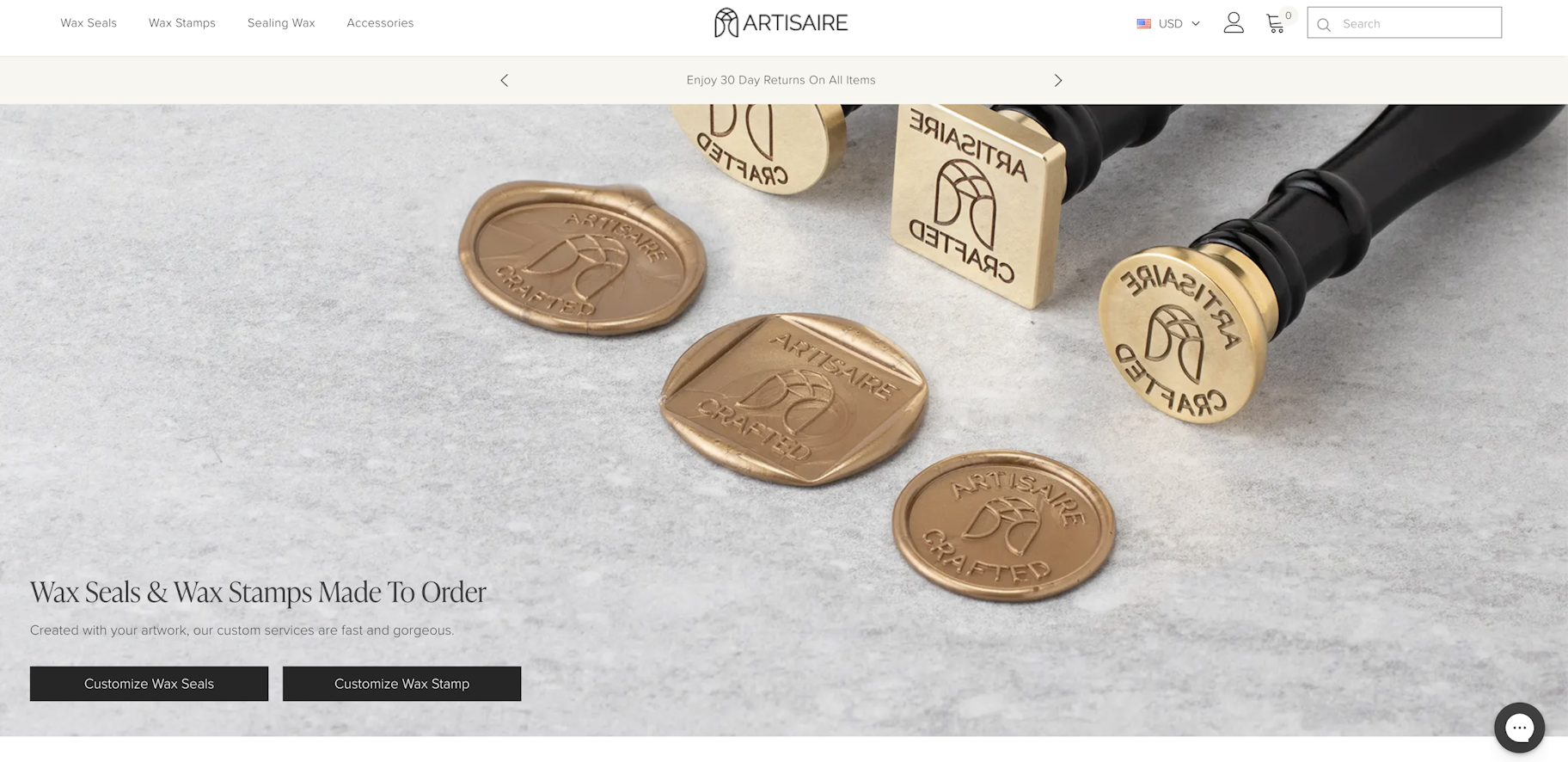
A wonderful example of a crafts company, the Artisaire brand offers customers a wide selection of wax sealing stamps and supplies. You can get everything from customized stamps for your letters to stunning waxes here. This is a great example of how crafts companies can go niche with their choice of products and appeal to a great audience in the process.
Artisaire makes all of its own products in a factory from Canada; the business is family-run by the Thomsens.
2. The Honeybunch Shop
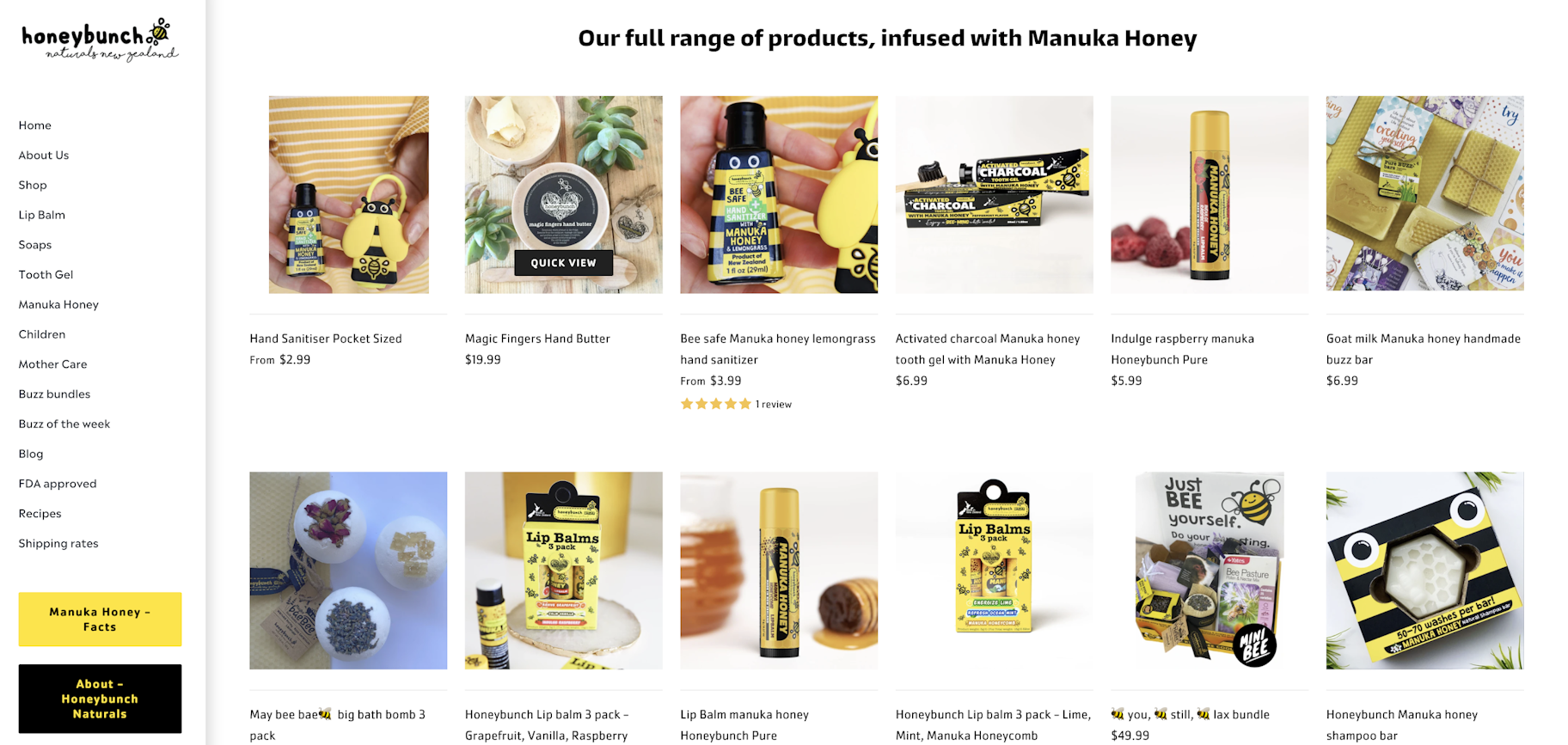
The Honeybunch shop created by Lisa Jolly is a business built entirely on passion. The founder, Lisa, believes in building stunning soaps and bath products with natural ingredients. Lisa started her career in retail and has launched other businesses before she began the Honeybunch Shop.
According to Jolly, she didn’t know anything about making soaps when she first came up with the idea for her online store, but she quickly became an expert.
3. Cedar and Sail
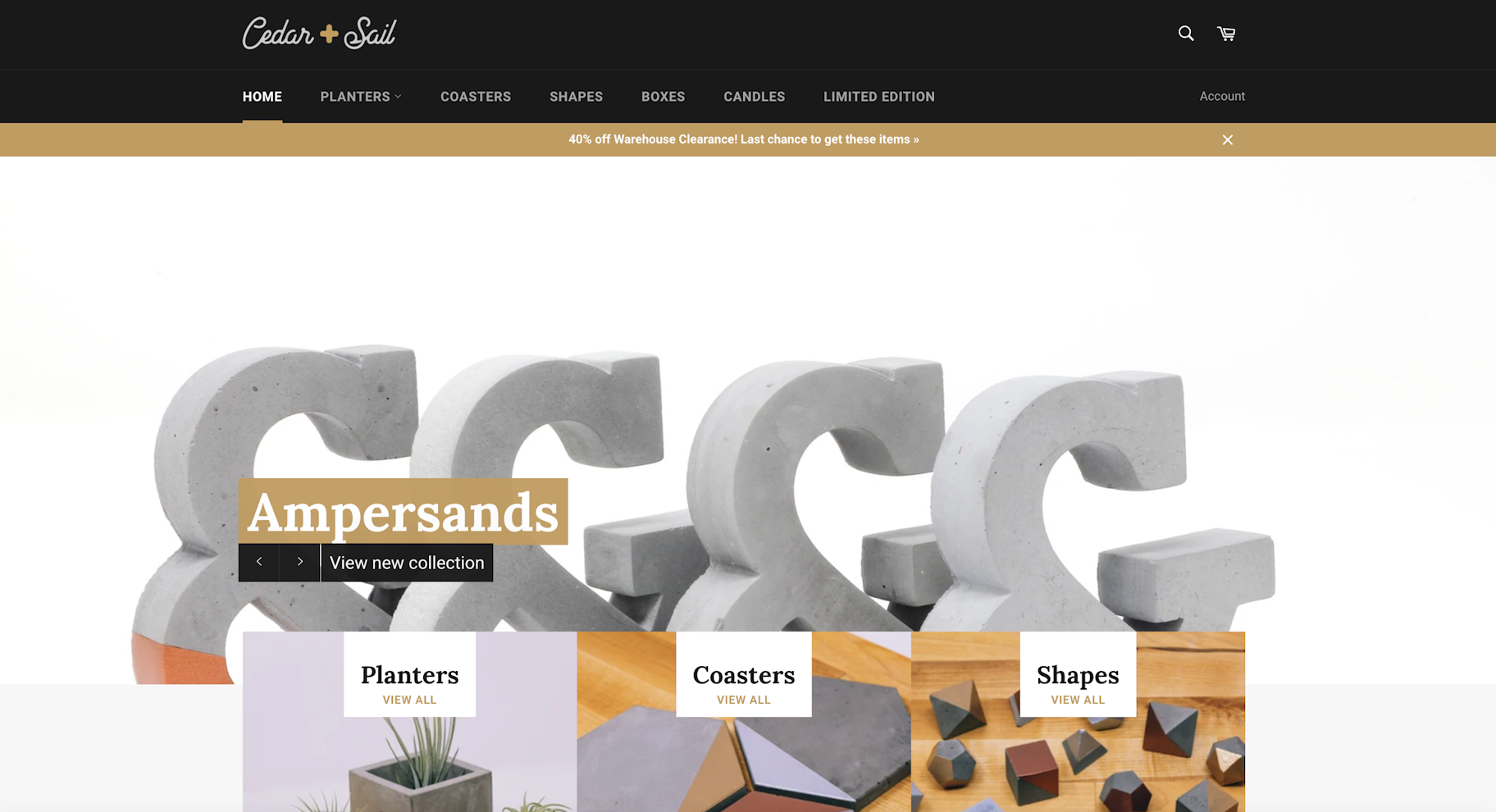
The story of Cedar and Sail proves that anyone can learn how to start a craft business and pursue their passions in their spare time. The company came from an idea to create unique designs and accessories for homes using 3D printers and other modern techniques. The brand has a vast portfolio of small but attractive items to offer today, including candles, planters, and coasters.
Cedar and Sail started as a simple project for someone who wanted to do more of what they loved in their spare time. Today, the company is a roaring success.
Time to Get Crafty!
Hopefully, this article has shown you that learning how to start a craft business isn’t always as complicated as it seems. Once you’ve built an idea for your business on your passions, and you know there’s a market out there willing to buy your products, you’re already halfway there.
Add the right sales tools into the mix, like an ecommerce website and a dropshipping service, and you’ll be running a successful crafts business in no time.
Summary: How to Start a Craft Business in 2021
- Find a market opportunity
- Get familiar with your audience
- Write a business plan
- Make some crafts
- Find a manufacturer or supplier
- Build a brand
- Fulfill legal and logistics requirements
- Set up an online craft store
- Market your business
What types of crafts are you interested in selling? Let us know in the comments section below.
